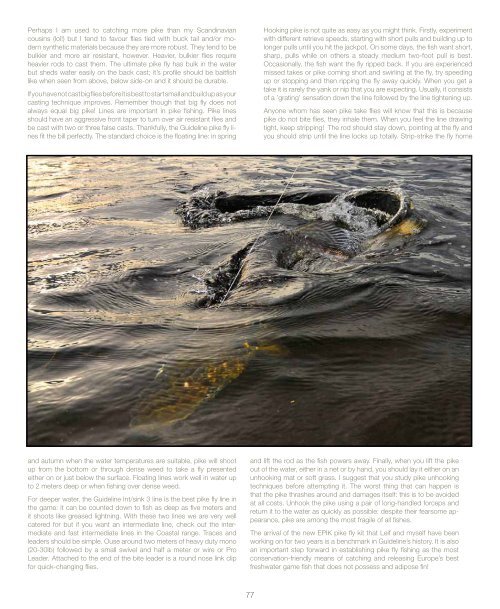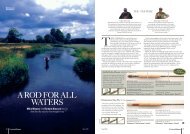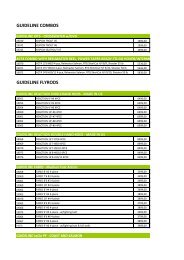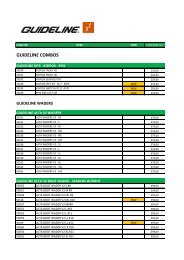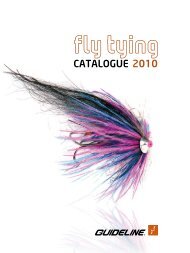Create successful ePaper yourself
Turn your PDF publications into a flip-book with our unique Google optimized e-Paper software.
Perhaps I am used to catching more pike than my Scandinaviancousins (lol!) but I tend to favour flies tied with buck tail and/or modernsynthetic materials because they are more robust. They tend to bebulkier and more air resistant, however. Heavier, bulkier flies requireheavier rods to cast them. The ultimate pike fly has bulk in the waterbut sheds water easily on the back cast; it’s profile should be baitfishlike when seen from above, below side-on and it should be durable.If you have not cast big flies before it is best to start small and build up as yourcasting technique improves. Re<strong>member</strong> though that big fly does notalways equal big pike! Lines are important in pike fishing. Pike linesshould have an aggressive front taper to turn over air resistant flies andbe cast with two or three false casts. Thankfully, the <strong>Guideline</strong> pike fly linesfit the bill perfectly. The standard choice is the floating line: in springHooking pike is not quite as easy as you might think. Firstly, experimentwith different retrieve speeds, starting with short pulls and building up tolonger pulls until you hit the jackpot. On some days, the fish want short,sharp, pulls while on others a steady medium two-foot pull is best.Occasionally, the fish want the fly ripped back. If you are experiencedmissed takes or pike coming short and swirling at the fly, try speedingup or stopping and then ripping the fly away quickly. When you get atake it is rarely the yank or nip that you are expecting. Usually, it consistsof a ’grating’ sensation down the line followed by the line tightening up.Anyone whom has seen pike take flies will know that this is becausepike do not bite flies, they inhale them. When you feel the line drawingtight, keep stripping! The rod should stay down, pointing at the fly andyou should strip until the line locks up totally. Strip-strike the fly homeand autumn when the water temperatures are suitable, pike will shootup from the bottom or through dense weed to take a fly presentedeither on or just below the surface. Floating lines work well in water upto 2 meters deep or when fishing over dense weed.For deeper water, the <strong>Guideline</strong> Int/sink 3 line is the best pike fly line inthe game: it can be counted down to fish as deep as five meters andit shoots like greased lightning. With these two lines we are very wellcatered for but if you want an intermediate line, check out the intermediateand fast intermediate lines in the Coastal range. Traces andleaders should be simple. Ouse around two meters of heavy duty mono(20-30lb) followed by a small swivel and half a meter or wire or ProLeader. Attached to the end of the bite leader is a round nose link clipfor quick-changing flies.and lift the rod as the fish powers away. Finally, when you lift the pikeout of the water, either in a net or by hand, you should lay it either on anunhooking mat or soft grass. I suggest that you study pike unhookingtechniques before attempting it. The worst thing that can happen isthat the pike thrashes around and damages itself: this is to be avoidedat all costs. Unhook the pike using a pair of long-handled forceps andreturn it to the water as quickly as possible: despite their fearsome appearance,pike are among the most fragile of all fishes.The arrival of the new EPIK pike fly kit that Leif and myself have beenworking on for two years is a benchmark in <strong>Guideline</strong>’s history. It is alsoan important step forward in establishing pike fly fishing as the mostconservation-friendly means of catching and releasing Europe’s bestfreshwater game fish that does not possess and adipose fin!77


